|
Research Policies and Results
INDEX
Introduction
Practice Based Research - Latest Clinical Outcomes
Client Attributes, Intervention, Assessment of Difficulties & Pro-Social
Results - Changes, Summary & Action Points
Client Attributes - Gender & Age
We were interested to see if there was any difference in the age of referrals according to gender. So we examined the most populated ages 8 - 14. There is not a great deal of difference although for ages 8 and 9 there are slightly more boys.
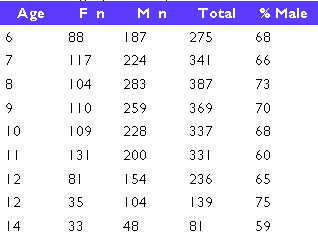
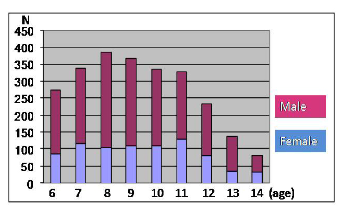
Client Attributes - Age By Year of Referral
The inceased size of the dataset this year enables us to carry out more ‘data mining’ with a greater degree of statistical confidence. For the first time we have analysed age by the last two years of referrals to see if there has been any changes in the pattern. As can be
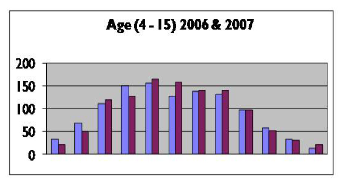
Having reviewed the attributes of our clients we now turn to the interventions and activities of the practitioners.
Intervention By Type
The data reveals that one to one working accounts for 79% of practice, with group therapy making up 13%. In splitting long term from short term we have used 12 sessions as the dividing line. There has been a slight drop in group work from the 16% recorded in last year’s analysis. The proportion of short term working

Assessment of Total Difficulties
We have compared, fir the first time, the pre assessment scores from referrers and parents to find out if there are differences. A view has been circulating that parents are
Referrers

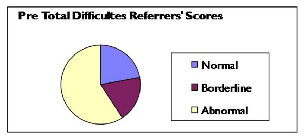
Parents

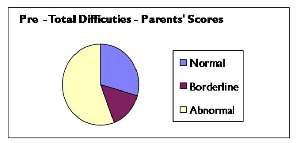
It may be seen that there is not much difference in the assessments of total difficulties, but .........
Assessment of Pro-Social
This analysis shows a rather different situation. The referrers assessed the children as having pro-social difficulties to a far greater extent than the parents. Over twice as many were rated ‘abnormal’ and fifty percent more ‘borderline’. Does this indicate different behaviour in the setting of the referrer, most frequently schools, as compared to home?
Or does it indicate a degree of parent denial? If so why is this not evident to the same degree with total difficulties?
Referrers

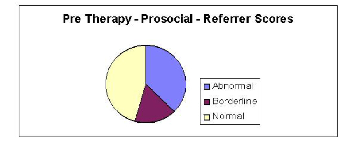
Parents


 | I am always doing what I cannot do, in order that I may learn how to do it. |
Results - Changes in Total Difficulties
This analysis of results is based upon referrers post therapy measures. The overall result is that 68% of the children receiving therapy from our members showed a positive change. The database now contains over 1800 pairs of pre and post therapy measures so that the results may predicted into the future with some confidence. It may be reasonably claimed that over two thirds of a typical

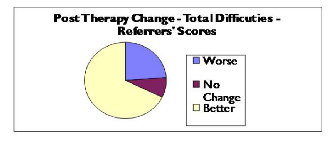
Results - Analysis by Severity of Condition
For the second year we have taken the analysis of the outcomes to a further level by splitting the dataset according to the initial total difficulties score. As illustrated below this continues to show that with increasing severity of the condition the greater the percentage of children that will show improvement. This year we have used the Goodman
Pre therapy -
Borderline
N = 362 | 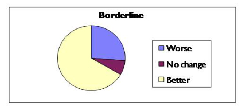 |
Pre therapy -
Abnormal
N = 1133 | 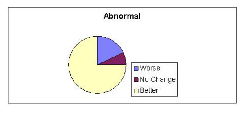 |
Pre therapy -
Abnormal
(score over 24)
N = 285
Better = 83% |  |
Back to top
|